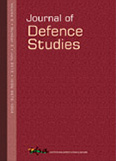Mumbai Redux: Debating India’s Strategic Response Options
A year has elapsed since the Mumbai carnage and there are renewed intelligence inputs about further terrorist attacks on our seaboard. What could be the Pakistani motivations for a resumption of its terrorist assault on India ?The Military – ISI complex in Pakistan appears to be under severe pressure due to the ongoing Global War On Terror (GWOT). 28% of its rank and file are ethnic Pathans who are seriously affected by the ongoing operations in Swat and FATA.
- G. D. Bakshi
- October 2009








